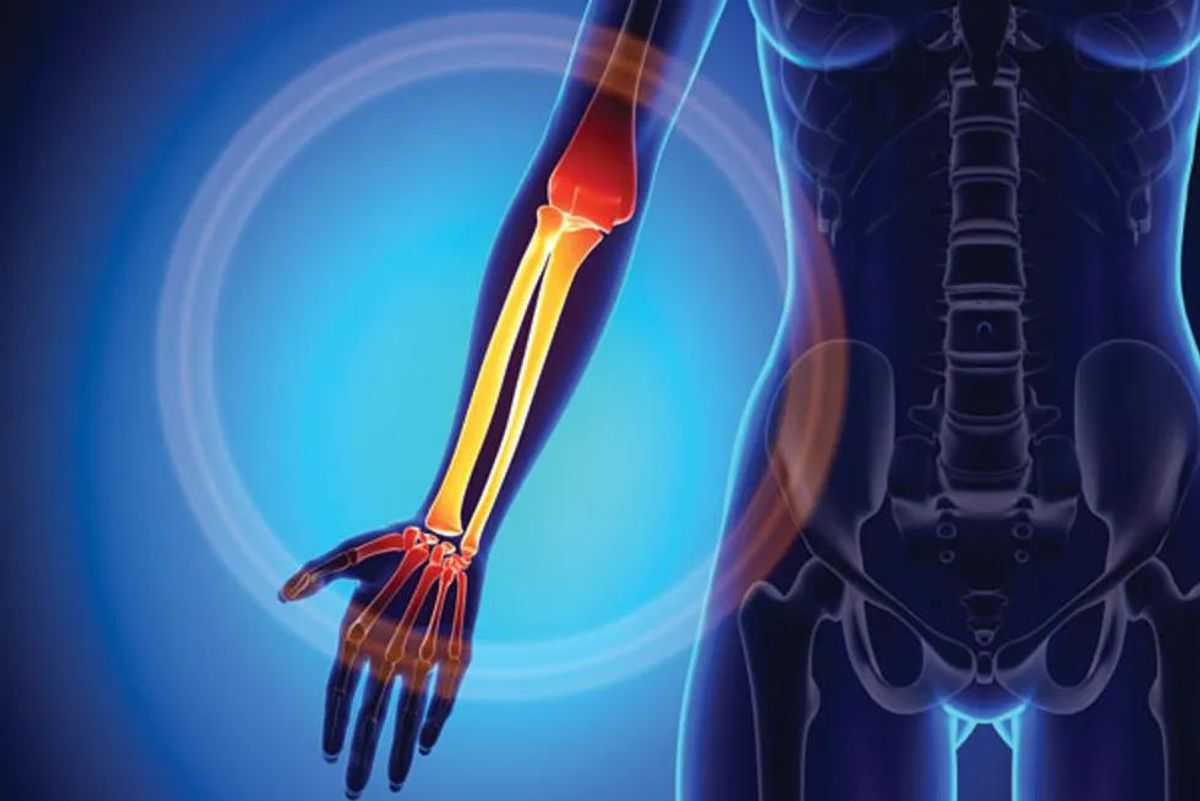It's never too early to start thinking about your bone health. One in two women over age 50 will have an osteoporosis-related fracture in her lifetime. Osteoporosis is a disease that results in low bone mass, or density, which causes bones to become weak and fragile and more likely to break.
Bones are living, growing tissue. They are continually broken down and rebuilt (called remodeling). About 85 to 90 percent of bone mass is acquired by age 18 in women, with bone loss beginning around age 30 and progressing over the years. Estrogen facilitates the bone-building process, so during menopause when estrogen levels fall, the balance is tipped so bone breakdown outpaces buildup.
The good news is that there are simple steps you can take now to help prevent bone loss or delay osteoporosis later in life.
Strengthening Your Bones
Eating a diet rich in calcium and getting regular physical activity are keys to maintaining and strengthening your bones. Nearly all of the calcium in your body is contained in your bones and teeth, adding strength and rigidity. Yet, despite the clear benefits of calcium, women around your age typically drink the least amount of milk; are more likely to skip breakfast—a meal that tends to naturally provide a good source of calcium and eat foods that have low density of calcium (e.g., fast food).
Skipping meals or replacing milk with nondairy drinks prevents calcium and nutrients from being properly absorbed. Alcohol consumption can deplete calcium in your bones, but a bigger threat to bone health is cigarette smoking.
A safe bet? Be sure to eat a well-balanced diet, exercise and look for ways to get more calcium.
Boosting Your Calcium Intake
How much is enough? Women's calcium needs change over time. Recommended calcium intake for women over 19 is 1000 mg a day, over 50, it's 1,200 mg, according to the National Osteoporosis Foundation.
Where Can You Find It?
The primary source of calcium is dairy, such as milk, yogurt and cheese. But you can find it in other foods, too. Non-dairy sources include calcium-fortified orange juice, leafy green vegetables like spinach and kale, fish and some breakfast cereals. Vitamin D helps your body absorb calcium. The Institute of Medicine guidelines recommend 600 international units (IUs) of supplemental vitamin D per day for everyone to age 71 and 800 IUs for those 71 and older. In addition, since vitamin D is manufactured in the skin following direct exposure to sunlight, getting 15 minutes of sunlight per day is a good idea as well.
Calcium supplements are another option. Calcium citrate and calcium carbonate are the most commonly used. Calcium carbonate should be taken with food, but calcium citrate can be taken any time. Make sure to read the label carefully and talk with your doctor.
Make Exercise a Priority
Not only is exercise important for maximizing bone health, it also helps you maintain muscle strength, increases coordination and balance and promotes overall health.
Focus on weight-bearing exercises, including lifting weights, running, jogging, tennis, climbing stairs and hiking. The impact created from activities, in which your body works against gravity, helps build stronger, denser bones. What if you've never been an athlete? Not to worry. It's not too late to get fit and take preventive action. Take opportunities to exercise your bones while doing daily activities, like washing your car or carrying groceries.
Talk to Your Health Care Professional
No matter what age you are, it's never to early to early to ask your health care provider what you can be doing to help prevent osteoporosis now. Here are some questions to ask:
- What are my risk factors (family history, body size, etc.)?
- Is there a way to measure the calcium in my body?
- Which weight-bearing exercises are most effective?
- How much exercise is enough?
- Would you recommend a calcium supplements?






